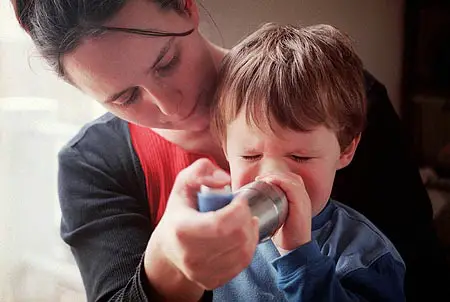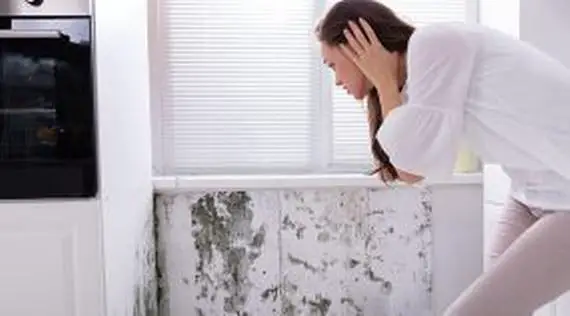
Discover the ins and outs of mold exposure risks in everyday life. Dive into simple steps to keep your home safe and breathe easier.
Ever walked into a damp room and caught that musty scent? That’s mold’s sneaky way of saying hello. But beyond that unmistakable smell, mold exposure risks can be a tad more discreet. Let’s pull back the curtain on this silent houseguest and chat about what it means for you and your cozy abode.
Mold Exposure Risks
Mold exposure risks are associated with a variety of health concerns, especially for individuals with allergies or respiratory conditions. Prolonged contact can lead to symptoms like sneezing, coughing, skin rashes, and asthma flare-ups. It’s essential to address mold growth promptly to ensure a healthy living environment.
Mold, often an unseen invader, silently creeps into our homes, potentially wreaking havoc on our health. As these microscopic fungi establish their colonies, understanding their nature and the health risks they pose becomes paramount. This article offers a comprehensive look into mold, its implications, and actionable steps to ensure a safe living environment.
What is Mold?
Mold is that sneaky guest that loves damp corners and old foods. It’s more than just an unsightly spot; it’s a living organism with a fascinating story. Ready to uncover what mold really is? Let’s dive in!
Definition and types of mold
Mold is a type of fungus that reproduces through tiny, airborne spores. There are thousands of mold species, each with its unique characteristics. While some molds are harmless, others can cause health issues when inhaled or ingested.
Common places mold can be found in homes
Mold often finds refuge in damp areas like bathrooms, basements, and kitchens. It can also grow on organic materials like wood, paper, and fabrics. Leaky roofs, poor ventilation, and flooding can also lead to mold infestations.
Conditions that promote mold growth
Mold thrives in environments with high humidity, poor ventilation, and stagnant air. It requires organic matter for sustenance, making our homes an ideal breeding ground.
Symptoms of Mold Exposure
Mold exposure can manifest in various ways, depending on one’s sensitivity and the duration of exposure.
Common symptoms in sensitive individuals
Symptoms can range from mild irritations like sneezing, runny or stuffy nose, itchy eyes, and skin rashes to more severe respiratory issues.
Mold allergies and their manifestations
Mold allergies are a reaction of the immune system to mold spores. This can lead to symptoms similar to hay fever, such as sneezing, itching, and a runny nose. In some cases, mold allergies can exacerbate asthma symptoms, leading to wheezing, difficulty breathing, and chest tightness.
Mold-induced asthma and its triggers
For those with asthma, mold can be a potent trigger. Mold spores, when inhaled, can cause inflammation in the airways, leading to an asthma attack. This can be particularly dangerous for children and the elderly.
The Myth of Toxic Mold Syndrome
The term toxic mold syndrome has been sensationalized in media, leading to misconceptions.
Media hype vs. scientific evidence
While certain molds, especially Stachybotrys chartarum (black mold), produce mycotoxins that can be harmful, the full extent of their effects on cognitive functions is still a topic of ongoing research.
It’s essential to approach claims about “toxic mold syndrome” with a discerning eye, as symptoms can sometimes overlap with other health conditions or environmental factors.
Always consult with healthcare professionals when experiencing severe symptoms after mold exposure.
Understanding the difference between mold allergy and toxic mold syndrome
While mold allergies are real and can cause respiratory symptoms, mold exposure can definitely make you ill. But toxic mold syndrome as portrayed in the media is largely unsubstantiated.
It’s essential to differentiate between the two to seek appropriate treatment.
Risks Associated with Mold Exposure
Mold, while a natural part of our environment, can pose significant health risks under certain conditions.
Risks for individuals with allergies and asthma
Exposure can exacerbate symptoms, leading to more frequent and severe asthma attacks or allergic reactions.
Long-term exposure implications
Chronic exposure can lead to persistent symptoms, increased sensitivity, and in severe cases, mold-induced lung conditions.
Mold’s Impact on Individuals with Compromised Immune Systems
For most people, mold might cause minor irritations or allergic reactions, but for those with compromised immune systems, the story can be quite different. Individuals with weakened immune responses are more susceptible to infections, and mold presents an added risk.
Increased Vulnerability to Infections:
Mold produces spores and, in some cases, mycotoxins. While these might not significantly affect a healthy individual, someone with a compromised immune system can be more vulnerable to fungal infections. These infections can range from superficial skin conditions to more severe respiratory or systemic infections.
Prolonged Recovery:
For those with weakened immune responses, recovery from mold-related health issues can be more extended and more challenging. Their bodies might struggle to combat the mold spores effectively, leading to prolonged symptoms and the potential for complications.
Severity of Symptoms:
While sneezing or a runny nose might be the extent of symptoms for many, individuals with compromised immune systems might experience more severe reactions. This can include chronic coughing, persistent fatigue, and in severe cases, organ-related complications due to mold-related infections.
Importance of a Mold-Free Environment:
For individuals with compromised immunity, maintaining a mold-free environment is not just about comfort; it’s a health necessity.
Regular checks, prompt mold removal, and preventive measures become even more critical to ensure their living spaces remain safe.
In essence, while mold is a concern for everyone, it poses a heightened risk for those with compromised immune systems.
Recognizing this risk and taking proactive measures can make a significant difference in their health and well-being.
Preventing and Treating Mold in Homes
Ah, the age-old battle against mold in our homes! While its sneaky presence might seem like a mere annoyance, unchecked mold can become more than just an unsightly spot on your wall.
It’s about creating a safe, breathable space for you and your loved ones.
So, how do we keep our homes mold-free and what steps should we take if it’s already made itself comfortable?
Let’s dive into the essentials of preventing and treating mold to ensure our homes remain our sanctuary.
Identifying and eliminating sources of moisture
Moisture is mold’s best friend, and our homes can unwittingly provide plenty of damp spots.
Regular inspections can help pinpoint potential problem areas. Check for water leaks, especially in places like under sinks, around windows, and in basements.
Ensure that areas prone to dampness, like bathrooms and kitchens, have proper ventilation.
Dehumidifiers can be a game-changer, especially in humid climates or during rainy seasons, by keeping the air dry and less hospitable for mold growth.
Proper ventilation and humidity control
Stagnant, humid air is a playground for mold spores. Rooms, particularly bathrooms, and basements, need to breathe.
Ensure they’re well-ventilated, either naturally or with the help of exhaust fans.
It’s a good practice to keep indoor humidity levels below 50% to deter mold growth.
Simple tools like hygrometers can help monitor indoor humidity, giving you a heads-up if levels start creeping up.
Cleaning and removing mold from surfaces
If you spot mold, don’t panic! Many times, it can be cleaned using specific mold-removing solutions available in stores.
However, the key is not just to clean but to ensure the area is dried thoroughly afterward.
Mold loves to make a comeback if conditions remain favorable. For extensive mold growth or if mold keeps returning despite your best efforts, it might be time to call in the professionals.
They have the tools and expertise to address the root of the problem.
Precautions to take when cleaning mold
Safety first! Mold spores can easily become airborne during the cleaning process.
Wearing protective gear, like masks and gloves, is essential to prevent inhalation and direct skin contact.
Ensure the room you’re cleaning is well-ventilated, and consider using a fan to direct mold spores outside.
After cleaning, wash your clothes immediately to prevent the spread of spores to other parts of your home.
By being proactive and informed, you can keep mold at bay and ensure a healthier living environment.
FAQs
Navigating the maze of mold-related concerns can be a tad overwhelming.
It’s not just about those unsightly patches on walls or that distinct musty smell.
To make things clearer, we’ve tackled some of the most burning questions about mold. Let’s dive in and demystify!
Q: Is black mold more dangerous than other molds?
A: Absolutely. Black mold, specifically Stachybotrys chartarum, is considered more harmful than most other mold types.
While all molds can cause allergic reactions, Stachybotrys chartarum produces mycotoxins that can lead to more severe health issues, especially with prolonged exposure.
It’s essential to address black mold infestations promptly.
Q: How can I prevent mold growth in my home?
A: Prevention is key! Regularly check for moisture build-up, ensure rooms have proper ventilation, and consider using dehumidifiers in particularly damp areas.
Addressing water leaks immediately and ensuring your home has good airflow can significantly reduce the chances of mold taking root.
Q: What are the symptoms of mold-induced asthma?
A: Mold-induced asthma can be quite distressing. Those affected may experience wheezing, shortness of breath, chest tightness, and persistent coughing.
It’s essential to be aware of these symptoms, especially if you’ve been exposed to mold, and consult with a healthcare professional.
Q: Can mold exposure cause memory loss or fatigue?
A: While there’s no direct evidence linking mold exposure to memory loss, chronic exposure can lead to a range of symptoms, including fatigue, headaches, and difficulty concentrating.
It’s always best to consult with a healthcare professional if you experience these symptoms and suspect mold exposure.
Q: How do I properly clean and remove mold from my home?
A: Cleaning mold requires a careful approach. Use appropriate cleaning agents designed for mold removal.
Ensure the area is well-ventilated during the cleaning process, and always wear protective gear like masks and gloves.
For extensive or hard-to-reach infestations, it might be best to call in professional mold remediation experts.
Conclusion
Mold, while a natural part of our environment, can pose health risks when allowed to proliferate in our homes.
By staying informed and taking proactive measures, we can ensure a healthy living environment.
Always seek professional advice if you suspect a severe mold problem in your home.
Remember, prevention is always better than cure, especially when it comes to mold.
The Value of Awareness
Knowledge is our first line of defense. By understanding the conditions mold thrives in and recognizing its early signs, we can take timely action.
Regular home checks, especially after seasonal changes or incidents like flooding, can be invaluable.
Educating ourselves and our families about mold’s tell-tale signs ensures that minor issues don’t escalate into major problems.
The Importance of a Proactive Approach
Prevention is always better than cure, especially in the context of mold.
Simple habits, like ensuring proper ventilation, fixing leaks promptly, and using dehumidifiers, can make a world of difference.
Moreover, in situations where mold has already taken hold, seeking professional advice and intervention can save both time and potential health hazards in the long run.
In wrapping up, while mold might seem like a daunting challenge, with the right tools, knowledge, and approach, we can ensure our homes remain safe, healthy, and mold-free.


